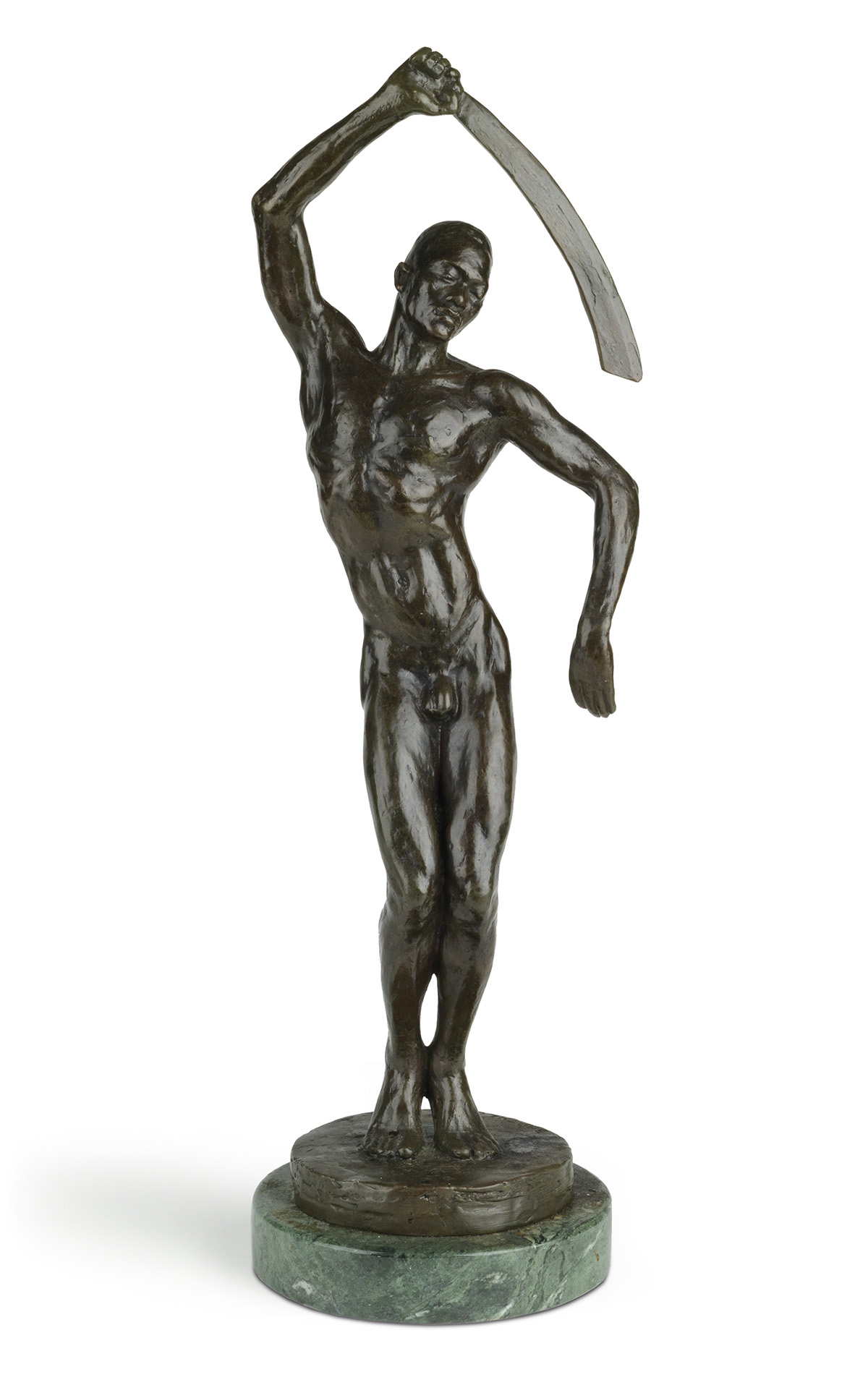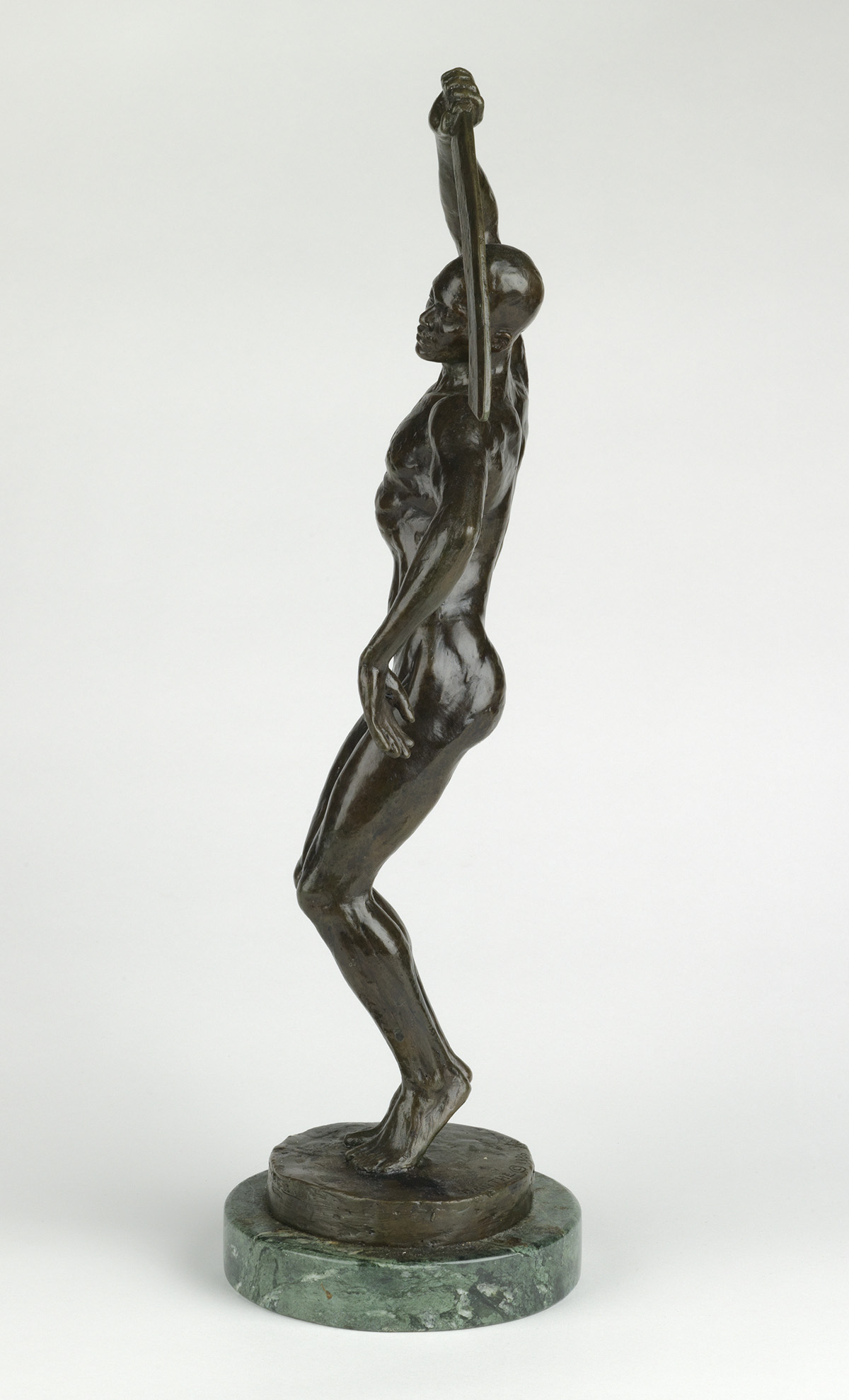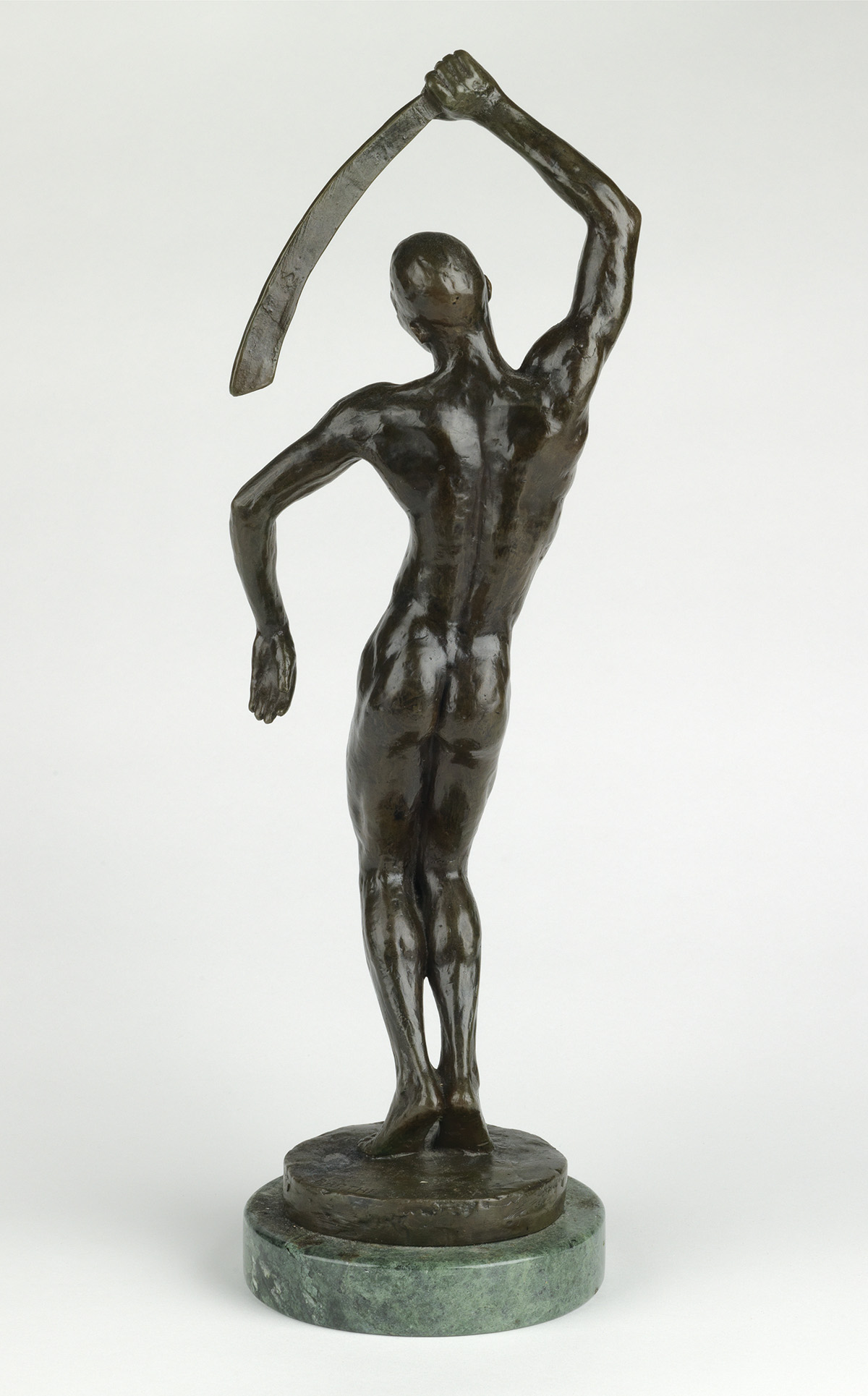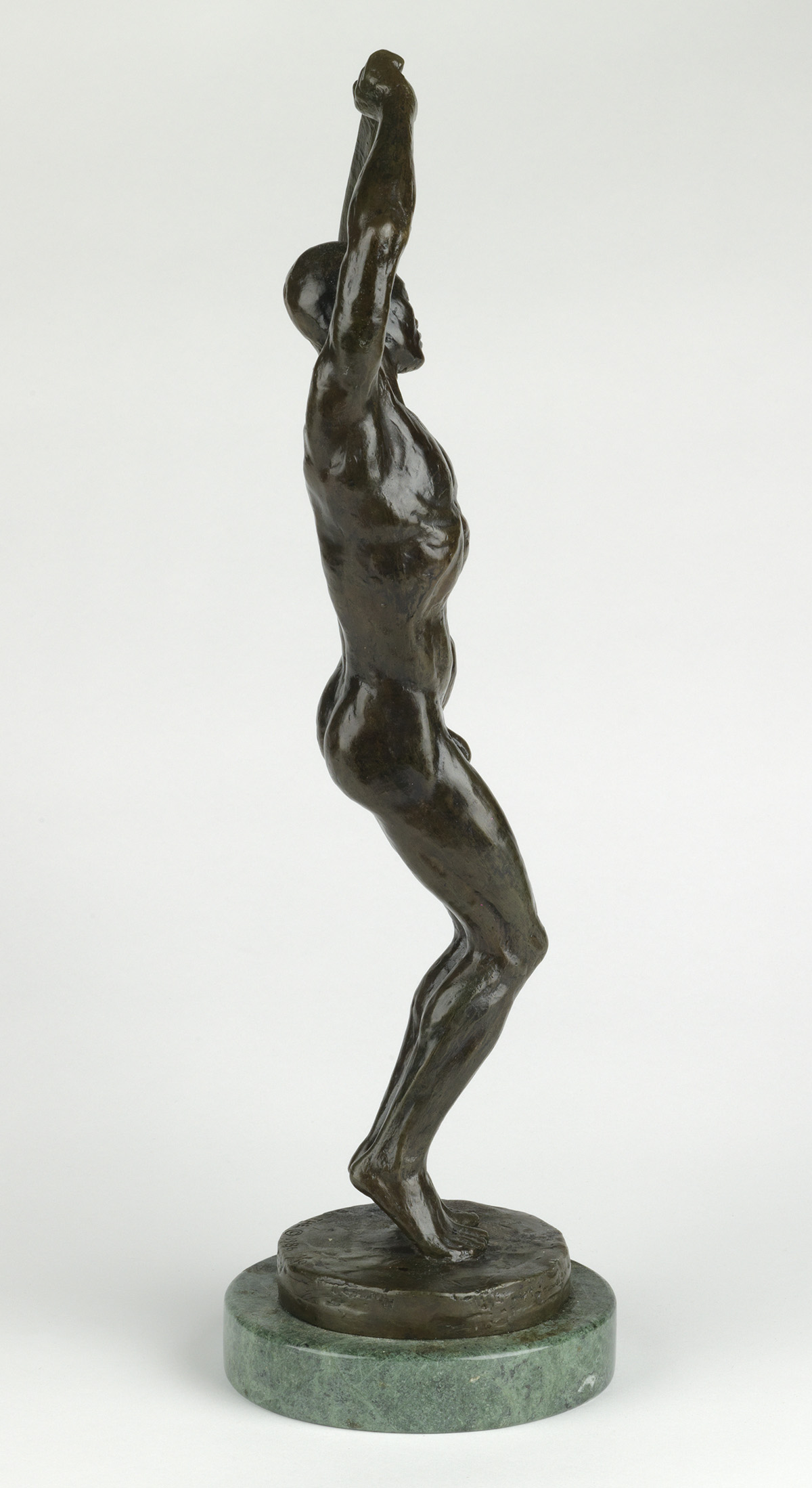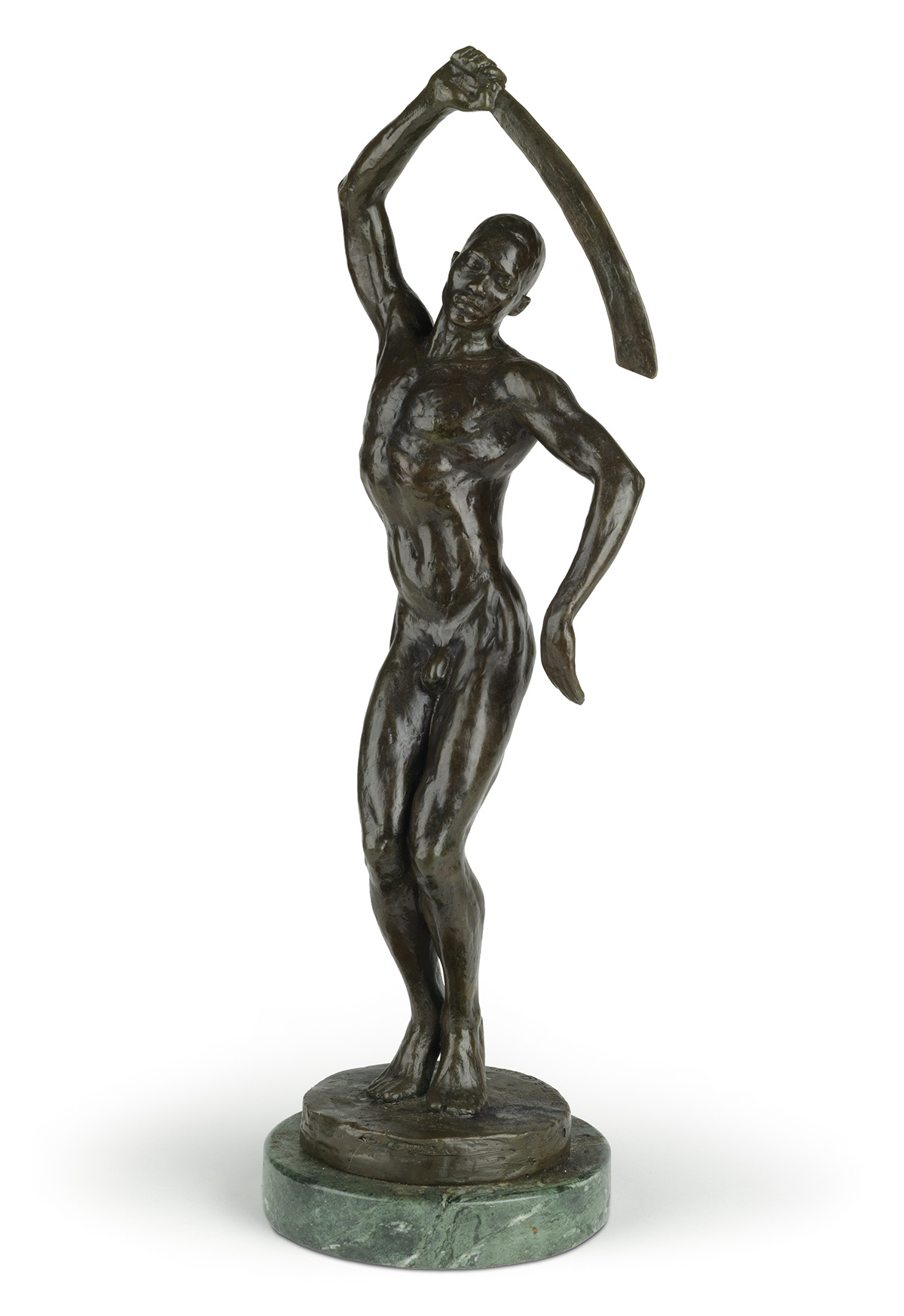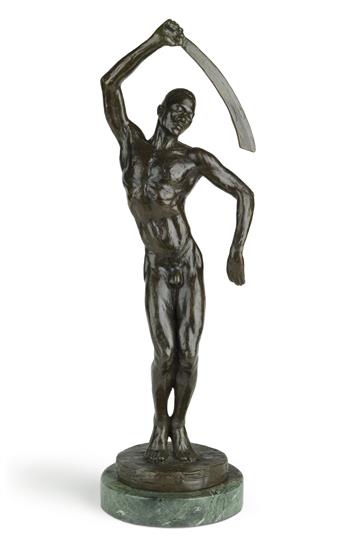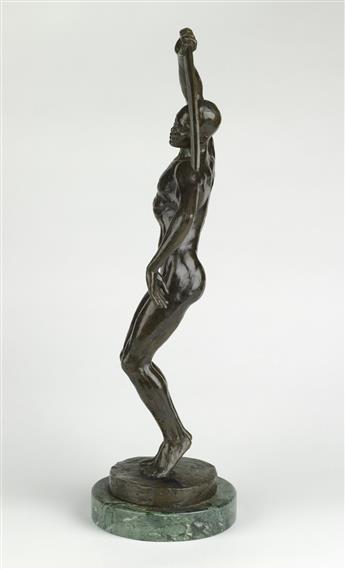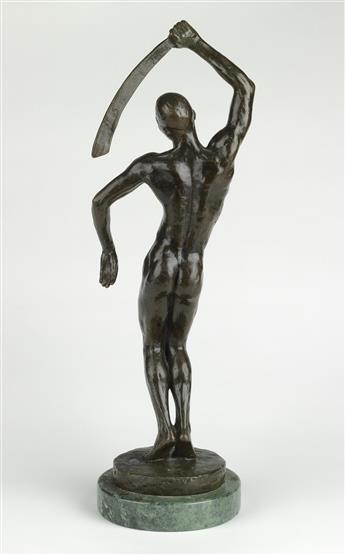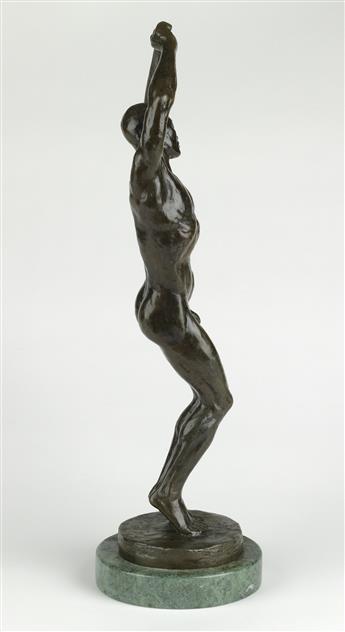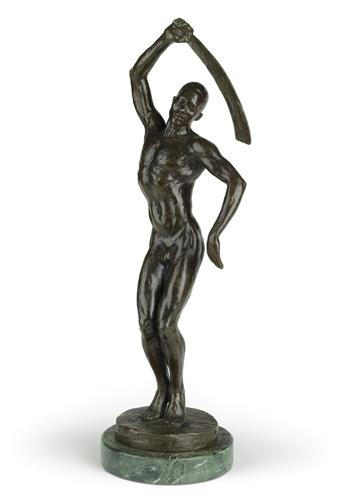Sale 2535 - Lot 10
Price Realized: $ 520,000
Price Realized: $ 629,000
?Final Price Realized includes Buyer’s Premium added to Hammer Price
Estimate: $ 40,000 - $ 60,000
RICHMOND BARTHÉ (1901 - 1989)
Feral Benga.
Cast bronze, with a dark brown patina, modeled in 1935, cast in 1986. Approximately 483 mm; 19 inches high (not including the marble base). From the edition of 10, cast under the supervision of the artist and the Richmond Barthé Trust. Signed, inscribed "©," dated 1986, and numbered 1/10 in the base edge.
Provenance: the artist; Samella Lewis, Los Angeles; private collection, Atlanta.
Feral Benga represents the culmination of Richmond Barthé's study of the figure in sculpture, anatomy and dance in the 1930s, and his pioneering realization of an ideal male nude. According to Barthé scholar Margaret Rose Vendryes, Feral Benga, Barthé's "signature piece," was completed within a few months of seeing the Folies Bergères dancer Benga perform on stage during his first visit to Paris in 1934. Vendryes describes how Benga was an exotic celebrity--a Senegalese cabaret dancer known in Parisian and Manhattan gay circles, who had perfomed on stage with Josephine Baker and had even appeared in a Jean Cocteau surrealist film. Barthé used postcards, photographs and his memory to recreate a life-like representation of the dancer. The raised sword pose also recalls the muscular nudes of the famous Mannerist engraving by Antonio Pollaiuolo, Battle of Naked Men, circa 1470.
Grander in scale than its actual size, Feral Benga was one ot the artist's major achievements in his life-long body of work, a natural and sensual repesentation of the male nude, made at the height of his career. The sculpture was first shown at the 1937 Dance International exhibition at Rockefeller Center, and was later featured and illustrated in Alain Locke's seminal survey, The Negro in Art.The figure is also important as a groundbreaking evocation of both male and homosexual sexuality in early 20th century American Art. This is the second time that this 1986 cast of this bronze sculpture, the artist's most celebrated figure, has come to auction--there are only two bronzes known to exist from the 1930s casting. Vendryes pp. 66-69.
Feral Benga.
Cast bronze, with a dark brown patina, modeled in 1935, cast in 1986. Approximately 483 mm; 19 inches high (not including the marble base). From the edition of 10, cast under the supervision of the artist and the Richmond Barthé Trust. Signed, inscribed "©," dated 1986, and numbered 1/10 in the base edge.
Provenance: the artist; Samella Lewis, Los Angeles; private collection, Atlanta.
Feral Benga represents the culmination of Richmond Barthé's study of the figure in sculpture, anatomy and dance in the 1930s, and his pioneering realization of an ideal male nude. According to Barthé scholar Margaret Rose Vendryes, Feral Benga, Barthé's "signature piece," was completed within a few months of seeing the Folies Bergères dancer Benga perform on stage during his first visit to Paris in 1934. Vendryes describes how Benga was an exotic celebrity--a Senegalese cabaret dancer known in Parisian and Manhattan gay circles, who had perfomed on stage with Josephine Baker and had even appeared in a Jean Cocteau surrealist film. Barthé used postcards, photographs and his memory to recreate a life-like representation of the dancer. The raised sword pose also recalls the muscular nudes of the famous Mannerist engraving by Antonio Pollaiuolo, Battle of Naked Men, circa 1470.
Grander in scale than its actual size, Feral Benga was one ot the artist's major achievements in his life-long body of work, a natural and sensual repesentation of the male nude, made at the height of his career. The sculpture was first shown at the 1937 Dance International exhibition at Rockefeller Center, and was later featured and illustrated in Alain Locke's seminal survey, The Negro in Art.The figure is also important as a groundbreaking evocation of both male and homosexual sexuality in early 20th century American Art. This is the second time that this 1986 cast of this bronze sculpture, the artist's most celebrated figure, has come to auction--there are only two bronzes known to exist from the 1930s casting. Vendryes pp. 66-69.
Exhibition Hours
Exhibition Hours
Aliquam vulputate ornare congue. Vestibulum maximus, libero in placerat faucibus, risus nisl molestie massa, ut maximus metus lectus vel lorem.



